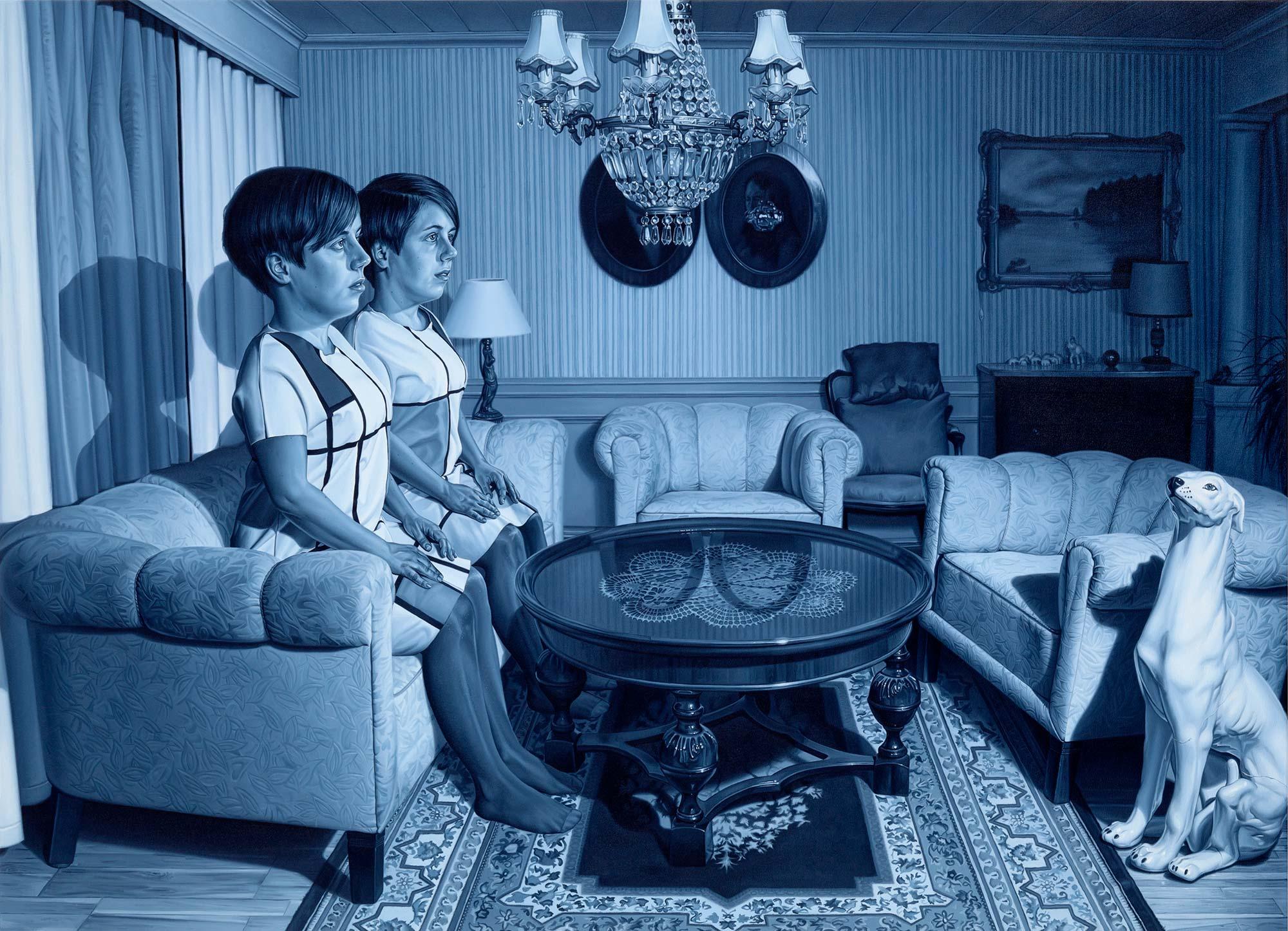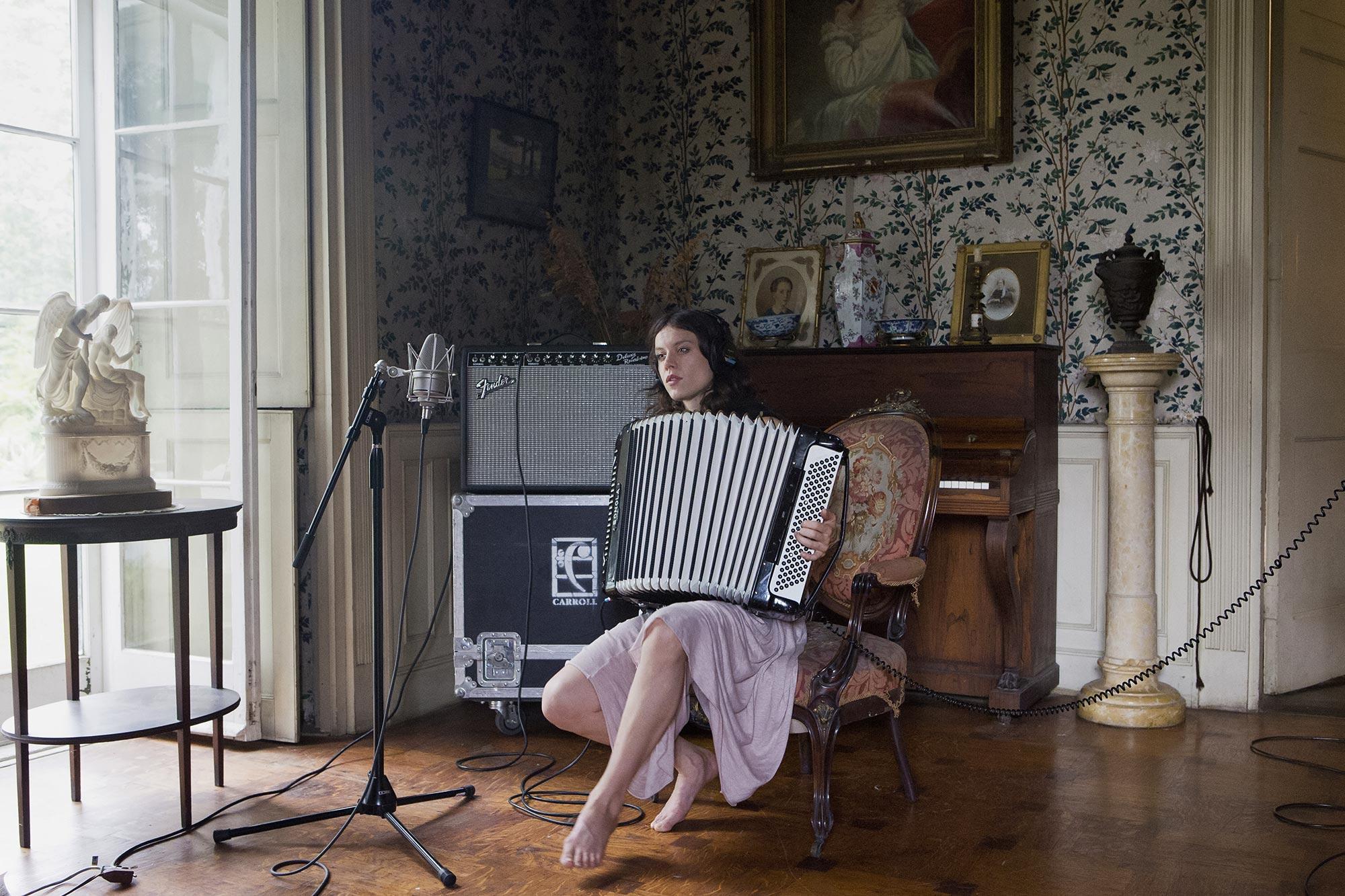
Eija-Liisa Ahtila
Ars fennica 2021
Visual artist and filmmaker Eija-Liisa Ahtila experiments with narration and form in her works that address the gendered, colonial and anthropocentric structures haunting the everyday and its representations.
WORKS
Gallery
Watch
Candidate video
About
Eija-Liisa Ahtila
Visual artist and filmmaker Eija-Liisa Ahtila experiments with narration and form in her works that address the gendered, colonial and anthropocentric structures haunting the everyday and its representations.
In Ahtila’s earlier moving image installations the protagonists of the human dramas are in a constant state of becoming, entangled in a web of intimate relations woven across generations, historical and geographical distances, and beyond human kinship. The works subtly unsettle normative understandings of rational agency and individualised sense of self in the face of death, the suffering of others, or mental breakdown.
During the last decade she has explored what an ecology of drama could be, that includes also more-than-human actors and their perspectives: how to allow another animal than human, or a tree or the wind, to take the centre stage in cinematic narratives? As protagonists, how might they challenge the conventions of both moving image and exhibition spaces? Works such as Horizontal and Studies on the Ecology of Drama experiment with expanding representation and narration towards these coexisting diverse temporal rhythms and spatial scales of lived experience.
In Ahtila’s multi-channel installations the storylines are pieced together by the spectators as they navigate between multiple parallel views on the scenes of events. The protagonists often address their words to the viewers, drawing them further into the unfolding narrative and cinematic space. Spoken language has increasingly given way to other sounds, while the works have become less tightly scripted. For example, Potentiality for Love offers viewers a silent situation, a space to dwell on the uncertain boundary between oneself and others, while attending to the possibility of empathy that recognises irreducible differences.
Ahtila’s current work is concerned with how to depict and make sense of reality at the time of urgent ecological crises. How can art and moving image adapt to the changing world? What kind of shifts in perspectives and perceptions could align with the ongoing transformations in worldviews and in our interdependent relations?
Taru Elfving
Expert's statement
// Hans Ulrich Obrist
Alexis Pauline-Gumbs said: ‘We have the opportunity now, as a species fully in touch with each other (think social media), to unlearn and relearn our own patterns of thinking and storytelling in a way that allows us to be actually in communion with our environment as opposed to a dominating, colonialist separation from the environment.’
It is an honour for me to be involved in this wonderful Ars Fennica project and it has been a difficult decision to nominate a winner for this year’s Ars Fennica Award from such an incredible list of artists. I felt it is urgent to recognise the visionary practice of Eija-Liisa Ahtila.
Ahtila has done exemplary work for more than three decades and continues to make work that is urgent for the 21st century as one of the most important artists of our time. There are many reasons why I have chosen Ahtila to be the recipient of the Ars Fennica Award.
Ahtila has always bridged disciplines, working as a visual artist as well as a filmmaker and since the nineties pioneering the bringing together of moving image and installation work.
An important aspect is how most of her works, particularly in the last decades, have to do with the environment. In these works, the forest, its vegetation, and our natural surroundings are characters as important as human beings. This connects her to Édouard Glissant. Her work is not merely about ecology, it develops what Manthia Diawara calls a poetics of ecology.
Ahtila also makes me think of the importance of long term, as her process is a long durational one in this world of short termism. I have always admired the fact that both her way of working as well as her works themselves concern this. She has, for example, worked on her thesis for decades, she works over several years on her films, and her research is incredibly thorough: when we did the studio visit for Ars Fennica, Ahtila’s studio was filled with documents on the wall. It almost looked like a Warburgian Atlas of images and of found texts, based on an associative principle.
Ahtila’s work inter alia interrogates the anthropocentric nature of the moving image. The artist has created a more balanced image of life on our planet, which is not anthropocentric. She finds visual approaches and storytelling that show a way out of anthropocentrism and open up the space for non-human species to enter our imaginary realm. In these images, non-humans and humans can co-exist, trees can be protagonists in her stories.
The topics Ahtila deals with are very vast and that is why she approaches them from many different angels over many years, like a continuum. There is an amazing way in which she always shows us alternative viewpoints on things, like a puzzle whereby the elements are not two dimensional but form a three-dimensional puzzle in which she connects to the real. Ahtila really invented a methodology for an ecological moving image. Her work is urgent for this century and that is why I have chosen her as the recipient of the Ars Fennica Award.

Hans Ulrich Obrist
Curator
Hans Ulrich Obrist Hans Ulrich Obrist (b. 1968, Zurich, Switzerland) is Artistic Director of the Serpentine Galleries in London, Senior Advisor at LUMA Arles, and Senior Artistic Advisor at The Shed in New York. Prior to this, he was the Curator of the Musée d’Art Moderne de la Ville de Paris. Since his first show “World Soup” (The Kitchen Show) in 1991, he has curated more than 350 shows.
Obrist’s recent publications include Ways of Curating (2015), The Age of Earthquakes (2015), Lives of the Artists, Lives of Architects (2015), Mondialité (2017), Somewhere Totally Else (2018) The Athens Dialogues (2018), Maria Lassnig: Letters (2020), Entrevistas Brasileiras: Volume 2 (2020), and 140 Ideas for Planet Earth (2021).



